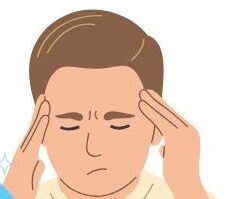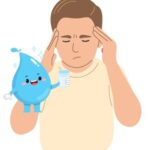Headaches are a common ailment, affecting millions of people worldwide. However, not all headaches are created equal. Among the various types of headaches, migraines are often misunderstood and misdiagnosed. This article explores the fundamental differences between migraines and headaches, delving into their types, causes, symptoms, and treatments, supported by scientific evidence and studies.
Understanding Headaches
Definition of Headaches
Headaches are defined as pain or discomfort in the head, scalp, or neck. They can be classified into primary and secondary headaches. Primary headaches are not a symptom of an underlying condition, while secondary headaches result from another medical issue, such as an injury or a sinus infection.
Common Types of Primary Headaches
- Tension-Type Headaches (TTH): Characterized by a dull, aching pain, often described as a tight band around the head. They are the most common type of headache.
- Migraine: A more severe type of headache that can cause debilitating pain, often accompanied by other symptoms like nausea, vomiting, and sensitivity to light or sound.
- Cluster Headaches: A rare type of headache that occurs in cyclical patterns or clusters, characterized by intense pain around one eye.
Prevalence
According to the World Health Organization (WHO), approximately 50% of adults aged 18-65 have experienced a headache in the last year. Migraines affect about 12% of the population, with a higher prevalence in women than in men.
Understanding Migraines
Definition of Migraines
Migraines are a specific type of headache characterized by recurring episodes of moderate to severe pain, often on one side of the head. They may last from a few hours to several days and can be accompanied by a range of other symptoms.
Types of Migraines
- Migraine Without Aura: The most common form, characterized by unilateral throbbing pain, often accompanied by nausea and light sensitivity.
- Migraine With Aura: Involves visual disturbances or other neurological symptoms that precede or accompany the headache.
- Chronic Migraine: Occurs when a person experiences migraines on 15 or more days per month for at least three months.
- Hemiplegic Migraine: A rare form that can cause temporary paralysis or weakness on one side of the body.
Symptoms of Migraines
- Moderate to severe pain, often unilateral
- Nausea and vomiting
- Sensitivity to light, sound, or smells
- Aura: visual disturbances, such as flashes of light or blind spots
Triggers of Migraines
Common triggers include:
- Hormonal changes
- Certain foods (e.g., aged cheese, chocolate)
- Stress
- Sleep disturbances
- Environmental factors (e.g., bright lights, weather changes)
Pathophysiology of Migraines
The exact cause of migraines is still under investigation, but it is believed to involve a combination of genetic, environmental, and neurovascular factors. Goadsby et al. (2002) suggest that changes in brainstem activity lead to the release of inflammatory substances, causing the characteristic pain of migraines.
Key Differences Between Migraines and Headaches
Pain Characteristics
- Migraine: Throbbing or pulsating pain, often unilateral, and can be severe enough to impair daily activities.
- Tension-Type Headache: Dull, aching pain that feels like pressure, usually bilateral and less severe.
Associated Symptoms
- Migraine: Accompanied by nausea, vomiting, and sensitivity to light and sound.
- Tension-Type Headache: Typically lacks the severe nausea and sensitivity seen in migraines.
Duration and Frequency
- Migraine: Lasts from 4 to 72 hours and can occur several times a month.
- Tension-Type Headache: Usually lasts from 30 minutes to a week, occurring infrequently or frequently without the episodic pattern of migraines.
Diagnosis
Migraines are diagnosed based on clinical criteria established by the International Classification of Headache Disorders (ICHD). A thorough patient history and symptom evaluation are essential for accurate diagnosis.
Scientific Evidence and Studies
Study 1: Prevalence of Headache Types
A study published in The Journal of Headache and Pain by Buse et al. (2018) examined the prevalence of different headache types. The researchers found that TTH was the most common, while migraines affected 12% of the population, emphasizing the need for proper diagnosis.
Study 2: Pathophysiology of Migraines
Research by Goadsby et al. (2002) discusses the neurovascular changes that occur during migraine attacks, emphasizing the role of the trigeminal system in the development of migraine pain.
Study 3: Quality of Life in Migraine Sufferers
A study by Sullivan et al. (2004) assessed the impact of migraines on quality of life. The findings indicated that migraines significantly impair daily functioning and psychological well-being.
Treatment Approaches
Treatment for Tension-Type Headaches
- Over-the-counter Medications: Nonsteroidal anti-inflammatory drugs (NSAIDs) such as ibuprofen and acetaminophen are commonly used.
- Relaxation Techniques: Stress management techniques, including mindfulness and yoga, can reduce the frequency and severity of TTH.
- Physical Therapy: Manual therapies and exercises may help alleviate tension in the neck and shoulders.
Treatment for Migraines
- Abortive Medications: Triptans, NSAIDs, and anti-nausea medications are commonly prescribed to relieve migraine pain.
- Preventive Medications: Beta-blockers, antidepressants, and anticonvulsants may be recommended for individuals with frequent migraines.
- Lifestyle Modifications: Identifying and avoiding triggers, maintaining regular sleep patterns, and managing stress can significantly reduce migraine frequency.
- Alternative Therapies: Acupuncture and biofeedback have shown promise in some studies for migraine management.
Study on Treatment Efficacy
A systematic review by Tepper et al. (2005) assessed the efficacy of triptans in treating acute migraine attacks. The review found that triptans significantly reduce pain intensity and are more effective than placebo.

Understanding the differences between migraines and headaches is essential for effective diagnosis and treatment. While both conditions can cause significant discomfort, their underlying mechanisms, symptoms, and treatment strategies vary widely. Ongoing research continues to illuminate the complexities of these common yet distinct conditions, paving the way for improved therapeutic approaches and better quality of life for those affected.
References
- Buse, D. C., et al. (2018). “Prevalence of headache types in the United States: A population-based study.” The Journal of Headache and Pain, 19(1), 17. Link to Study
- Goadsby, P. J., et al. (2002). “Pathophysiology of migraine.” The Journal of Neurology, 249(3), 261-269. Link to Study
- Sullivan, J. M., et al. (2004). “Quality of life in migraine patients: a multicenter study.” The Journal of Headache and Pain, 5(3), 137-143. Link to Study
- Tepper, S. J., et al. (2005). “Triptans in the acute treatment of migraine: A systematic review.” Headache: The Journal of Head and Face Pain, 45(5), 581-591. Link to Study







